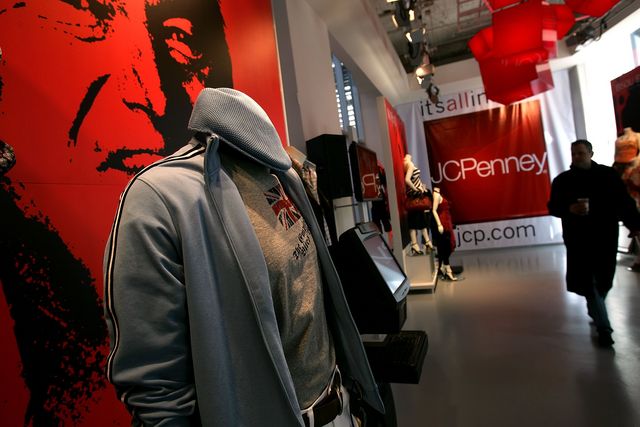Never let a tragedy go to waste. Study Success but also Failure
H.P. Takes $8.8bn Charge on ‘Accounting Improprieties’ at Autonomy
A Pro Weighs in on Autonomy’s Financial Statements: http://brontecapital.blogspot.com/2012/11/hewlett-packard-and-autonomy-notes-from.html
Historical Perspective on How HP Lost Its Way: http://tech.fortune.cnn.com/2012/05/08/500-hp-apotheker/?iid=EL
Here are 10 of the worst large mergers of the past decade.
Advanced Micro Devices Inc. Acquiring graphics chip maker ATI did nothing for AMD, and the company has been in a steady state of leadership change and decline almost ever since. AMD shares were around $20 in mid-2006, and they are now under $2.00.
Alcatel-Lucent S.A. (NYSE: ALU). France’s Alcatel acquired Lucent, and things have just slid lower and lower. The stock is now under $1.00.
Alpha Natural Resources Inc. (NYSE: ANR) announced its plan to buy Massey Energy at the end of January of 2011. The Alpha Natural Resources share price was above $50 when this deal was announced. Shares are down to around $7 now.
Bank of America Corp. (NYSE: BAC) may have won when it acquired Merrill Lynch, but by acquiring Countrywide it shot itself in the foot.
Boston Scientific Corp. (NYSE: BSX) paid more than $27 billion to acquire Guidant in 2006. All that Boston Scientific has to show for the huge undertaking is a group of very unhappy and depressed shareholders. This stock was $35 at the start of 2005 and its peak was around $45 shortly before that. Its shares slid long before the Great Recession to less than $15 in 2008 as the problems were mounting. Now Boston Scientific is close to a $5 stock with only a $7.2 billion market value, and it carries more debt than it has in physical assets.
Microsoft Corp. (NASDAQ: MSFT) really was supposed to get a lot more out of its aQuantive acquisition from 2007. On the surface it seemed like a great fit. In the summer of 2012 Microsoft announced that it was taking a $6.2 billion goodwill write-down tied mostly to this $6.3 billion merger.
Sears Holdings Corp. (NASDAQ: SHLD) is the amalgamation of two troubled retailers after Eddie Lampert married Sears and Kmart in 2005.
Sprint Nextel Corp. (NYSE: S) was originally just Sprint and Nextel before the late 2004 deal was announced. The deal did not formally close until August of 2005. If you adjust for payouts and the like, Sprint shares were around $22 before the merger and were around $23 when the deal closed in August 2005. This stock was dead money for years, and then by early 2008 it had fallen to less than $10 per share
Symantec Corp. (NASDAQ: SYMC) seemed to have a match made in heaven when it acquired Veritas Software. This married a storage giant right into a security giant. The problem is that this merger destroyed what had been a massive growth engine when Symantec shares already had started to falter.
The Wendy’s Company (NASDAQ: WEN) made a monumental error by becoming Wendy’s/Arby’s. Arby’s went to Triarc in 2005 and then became Wendy’s/Arby’s in 2008.
Worth reading in more detail: http://247wallst.com/2012/11/21/the-other-10-worst-big-mergers-of-the-past-10-years/
Book Recommendation: Deals from Hell, M&Q Lessons That Rise Above the Ashes by Robert F Bruner.
The detailed case studies consist of the following:
– Merger of the Pennsylvania and New York Central Railroads, 1968.
– Leveraged buyout of Revco Drug Stores, 1986.
– Acquisition of Columbia Pictures by Sony Corporation, 1989.
– Acquisition of NCR Corporation by AT&T Corporation, 1991.
– Renault’s proposed merger with Volvo, 1993.
– Acquisition of Snapple by Quaker Oats, 1994.
– Mattel’s acquisition of The Learning Company, 1999.
– Merger of AOL and Time Warner, 2001.
– Dynegy’s proposed merger with Enron, 2001.
– Acquisition program of Tyco International 2002.
Each case study of failure is accompanied by one or more comparison cases that vary in some instructive way.
First Chapter and Table of Contents:Deals from Hell
If you can avoid a merger failure or spot bad management to avoid you capital being misallocated then the $10 or $20 for this book is cheap. Also from the author: http://faculty.darden.virginia.edu/brunerb/
Criticism of Michael Porter’s Strategy. Can You Predict Sustainable Competitive Advantage?
A review of Porter’s Five Forces Industry Analysis:Five forces industry analysis
Thanks to a reader who says, “I don’t agree with all the premises of this author who criticizes Michael Porter’s Five Forces. Does Coke adapt to consumer preferences? Perhaps a little, but Coke’s competitive advantage seems sustainable while the author says there is no such thing.
Excerpt: No basis in fact or logic
There was just one snag. What was the intellectual basis of this now vast enterprise of locating sustainable competitive advantage? As Stewart notes, it was “lacking any foundation in fact or logic.” Except where the (advantage) was generated by government regulation, sustainable competitive advantage simply doesn’t exist.
Porter might have pursued sustainable business models. Or he might have pursued ways to achieve above-average profits. But sustainable above-average profits that can be deduced from the structure of the sector? Here we are in the realm of unicorns and phlogiston. Ironically, like the search for the Holy Grail, the fact that the goal is so mysterious and elusive ironically drove executives onward to continue the quest.
Hype, spin, impenetrable prose and abstruse mathematics, along with talk of “rigorous analysis”, “tough-minded decisions” and “hard choices” all combined to hide the fact that there was no evidence that sustainable competitive advantage could be created in advance by studying the structure of an industry.
Although Porter’s conceptual framework could help explain excess profits in retrospect, it was almost useless in predicting them in prospect. As Stewart points out, “The strategists’ theories are 100 percent accurate in hindsight. Yet, when casting their theories into the future, the strategists as a group perform abysmally. Although Porter himself wisely avoids forecasting, those who wish to avail themselves of his framework do not have the luxury of doing so. The point is not that the strategists lack clairvoyance; it’s that their theories aren’t really theories— they are ‘just-so’ stories whose only real contribution is to make sense of the past, not to predict the future.”
Full Article here: http://www.forbes.com/sites/stevedenning/2012/11/20/what-killed-michael-porters-monitor-group-the-one-force-that-really-matters/
For a detailed compilation of articles on this subject of strategy go here: Porters Five Forces of Any Value
P.S.: PRICE INFLATION
The latest Federal reserve data continues to show accelerating money supply (M2) growth. For the period starting Aug. 20, 2012 to November 12, 2012 the chained 13 week average for these periods, shows annualized non-seasonally adjusted M2 growing at 8.4%.









